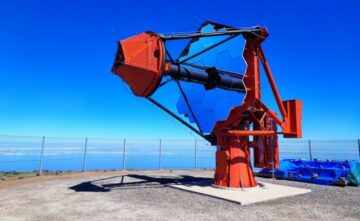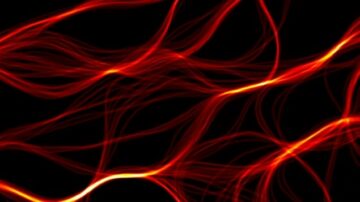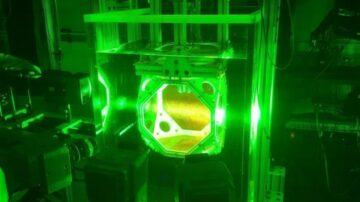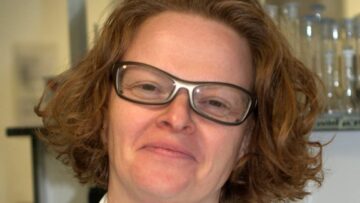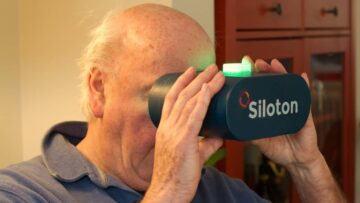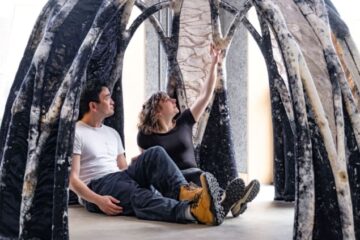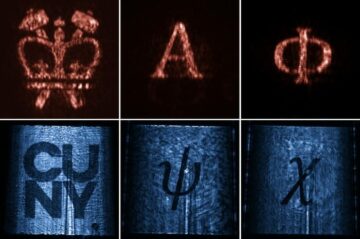Challenging to make
Kitaev spin liquids (KSLs) are a subtype of QSL that is known to be especially challenging to make in the laboratory. This is because, according to theory, they require a perfect (exactly solvable) two-dimensional honeycomb-shaped lattice in which to form. The spins in KSLs are also coupled via unusual exchange interactions. Such interactions are also responsible for the magnetic properties of everyday materials such as iron, and they occur between pairs of identical particles (such as electrons) – with the effect of preventing the spins on neighbouring particles from pointing in the same direction. KSLs are thus said to suffer from “exchange-coupling” frustration, rather than simple geometric frustration as in ordinary QSLs.
Another intriguing feature of KSLs is that they contain elementary excitations known as non-Abelian anyons, which are a prerequisite for fault-tolerant topological quantum computation. This type of computation makes use of quantum bits (qubits) defined in terms of fundamental shapes that cannot be easily deformed. These topologically-protected qubits are not readily perturbed by their environment, so the information they contain remains intact (or “coherent”) for longer.
The rare-earth chalcohalides family
According to Qingming Zhang and colleagues, rare-earth chalcohalides could come into their own for making KSLs. In their new study, which is published in Chinese Physics Letters, the group studied YbOCl crystals as well as polycrystals of SmSI, ErOF, HoOF and DyOF. They characterized the structures using X-ray diffraction and also measured their magnetic susceptibility, magnetization and heat capacity down to 1.8 K.

Quantum spin liquid candidate becomes a superconductor under pressure
The researchers found that all the REChX compounds they studied are truly two-dimensional, with their 2D structure being held in shape by weak van der Waals forces between the material layers. They also have an undistorted honeycomb spin lattice. This lattice arrangement, combined with the fact that the 4f electrons in the rare-earth magnetic ions are coupled via strong spin-orbit interactions (the interactions between the intrinsic spin on an electron and the magnetic field induced by the electron’s movement), provides the anisotropic exchange coupling necessary for KSLs to form.
According to Zhang, the discovery of this new family of KSL candidates will give a substantial push to research on QSL physics. He and his colleagues say they are now trying to grow larger REChX single crystals in which they can study these materials’ spin ground state – that is, the one that remains coherent over macroscopic length scales. To this end, they also envisage extending their measurements down to millikelvin temperatures.
Source: https://physicsworld.com/a/new-candidates-for-kitaev-spin-liquids-found/


